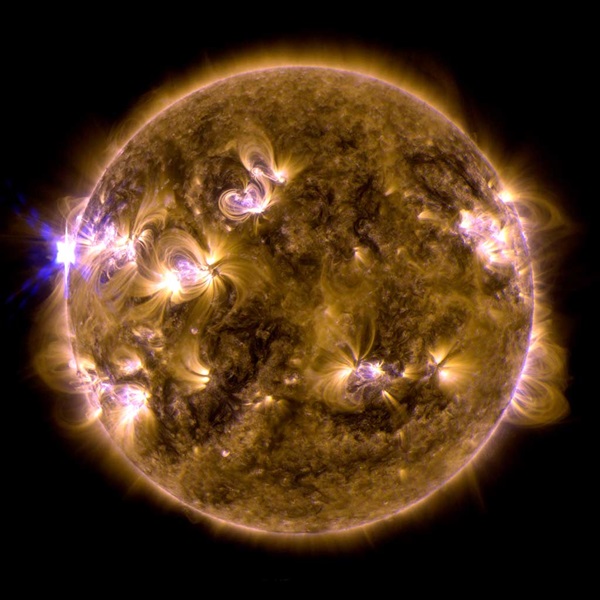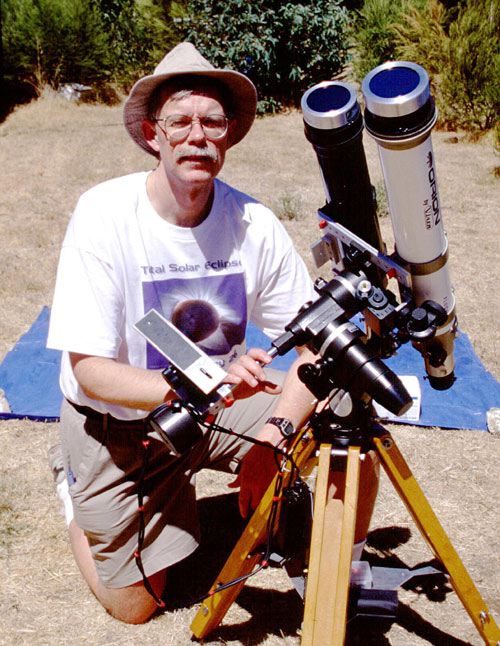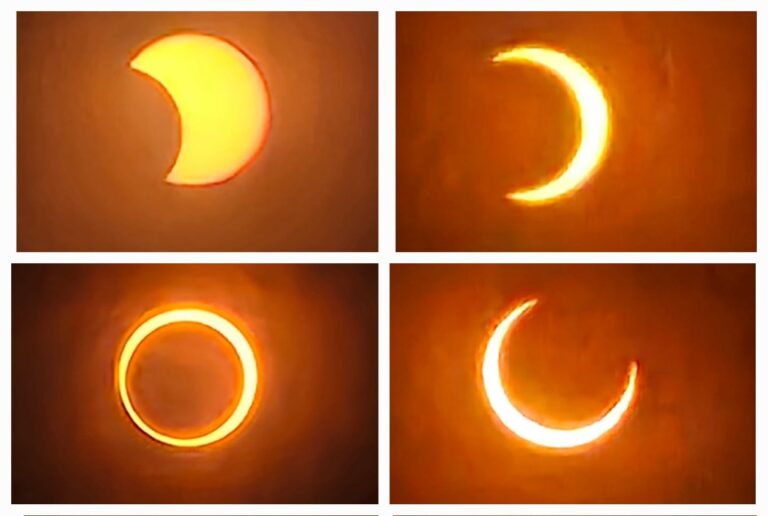Key Takeaways:
On May 12, 2013, the Sun emitted a significant solar flare, peaking at 10 p.m. EDT. This flare is classified as an X1.7, making it the first X-class flare of 2013. The flare was also associated with another solar phenomenon called a coronal mass ejection (CME) that can send solar material out into space. This CME was not Earth-directed.
Solar flares are powerful bursts of radiation. Harmful radiation from a flare cannot pass through Earth’s atmosphere to physically affect humans on the ground; however, when intense enough, they can disturb the atmosphere in the layer where GPS and communications signals travel. This disrupts the radio signals for as long as the flare is ongoing — the radio blackout associated with this flare has since subsided.
“X-class” denotes the most intense flares, while the number provides more information about its strength. An X2 is twice as intense as an X1, an X3 is three times as intense, etc.
This flare erupted from an active region just out of sight over the left side of the Sun, a region that will soon rotate into view. This region has produced two smaller M-class flares, as well.
The May 12 flare was also associated with a coronal mass ejection, another solar phenomenon that can send billions of tons of solar particles into space, which can affect electronic systems in satellites and on the ground. Experimental NASA research models show that the CME left the Sun at 745 miles (1,199 kilometers) per second and is not Earth-directed, but its flank may pass by the STEREO-B and Spitzer spacecraft, and their mission operators have been notified. If warranted, operators can put spacecraft into safe mode to protect the instruments from solar material. There is some particle radiation associated with this event, which is what can concern operators of interplanetary spacecraft since the particles can trip computer electronics on board.
Increased numbers of flares are quite common at the moment because the Sun’s normal 11-year activity cycle is ramping up toward solar maximum, which is expected in 2013. Humans have tracked the solar cycle continuously since it was discovered in 1843, and it is normal for there to be many flares a day during the Sun’s peak activity. The first X-class flare of the current solar cycle occurred February 15, 2011, and there have been another 15 X-class flares since, including this one. The largest X-class flare in this cycle was an X6.9 on August 9, 2011.
On May 13, 2013, the Sun emitted an X2.8-class flare, peaking at 12:05 p.m. EDT. This is the strongest X-class flare of 2013 so far, surpassing in strength the X1.7-class flare that occurred 14 hours earlier. It is the 16th X-class flare of the current solar cycle and the third-largest flare of that cycle. The second strongest was an X5.4 event on March 7, 2012. The strongest was an X6.9 on August 9, 2011.
The X2.8-class flare was also associated with a coronal mass ejection (CME), another solar phenomenon that can send billions of tons of solar particles into space, which can potentially affect electronic systems in satellites and on the ground. The CME was not Earth-directed, but could pass NASA’s STEREO-B, MESSENGER, and Spitzer spacecraft. Their mission operators have been notified. Experimental NASA research models show that the CME left the Sun at 1,200 miles (1,930km) per second beginning at 12:18 p.m. EDT. If warranted, operators can put spacecraft into safe mode to protect the instruments from solar material.
The Sun emitted a third significant solar flare in under 24 hours, peaking at 9:11 p.m. EDT on May 13, 2013. This flare is classified as an X3.2 flare. This is the strongest X-class flare of 2013 so far, surpassing in strength the two X-class flares that occurred earlier in the 24-hour period.
The flare also was associated with a CME, which began at 9:30 p.m. EDT and was not Earth-directed. Experimental NASA research models show that the CME left the Sun at approximately 1,400 miles (2,250km) per second, which is particularly fast for a CME. The models suggest that it will catch up to the two CMEs associated with the earlier flares.
Fourth Update: May 15
Solar activity continued May 14 as the Sun emitted a fourth X-class flare from its upper left limb, peaking at 9:48 p.m. EDT. This flare is classified as an X1.2 flare and is the 18th X-class flare of the current solar cycle. The flare caused a radio blackout — categorized as an R3, or strong, on NOAA’s space weather scales from R1 to R5 — which has since subsided.
The flare also was associated with a non-Earth-directed CME. Experimental NASA research models show that this CME left the Sun at around 745 miles (1,200km) per second, beginning at 10:18 p.m. EDT.












